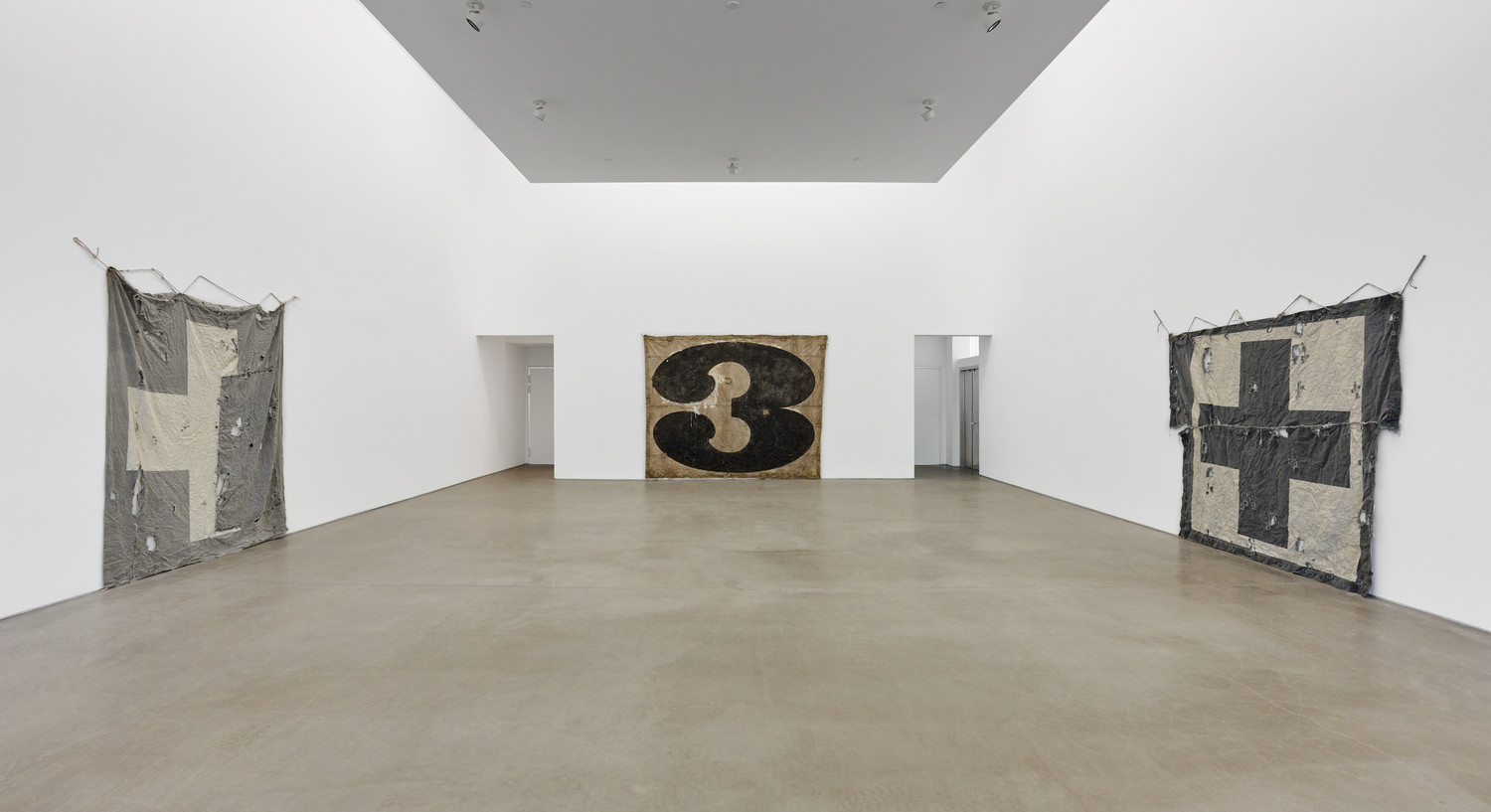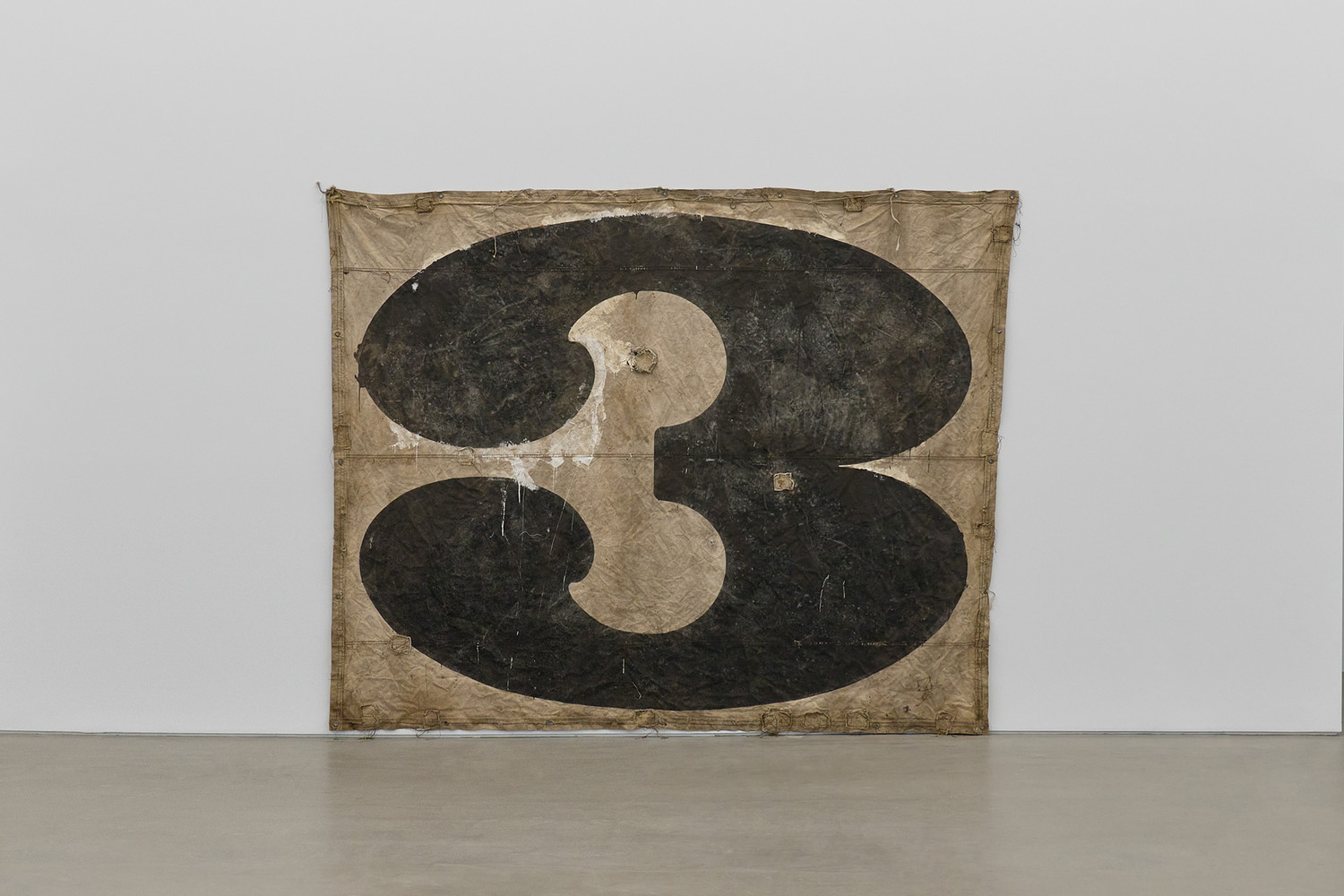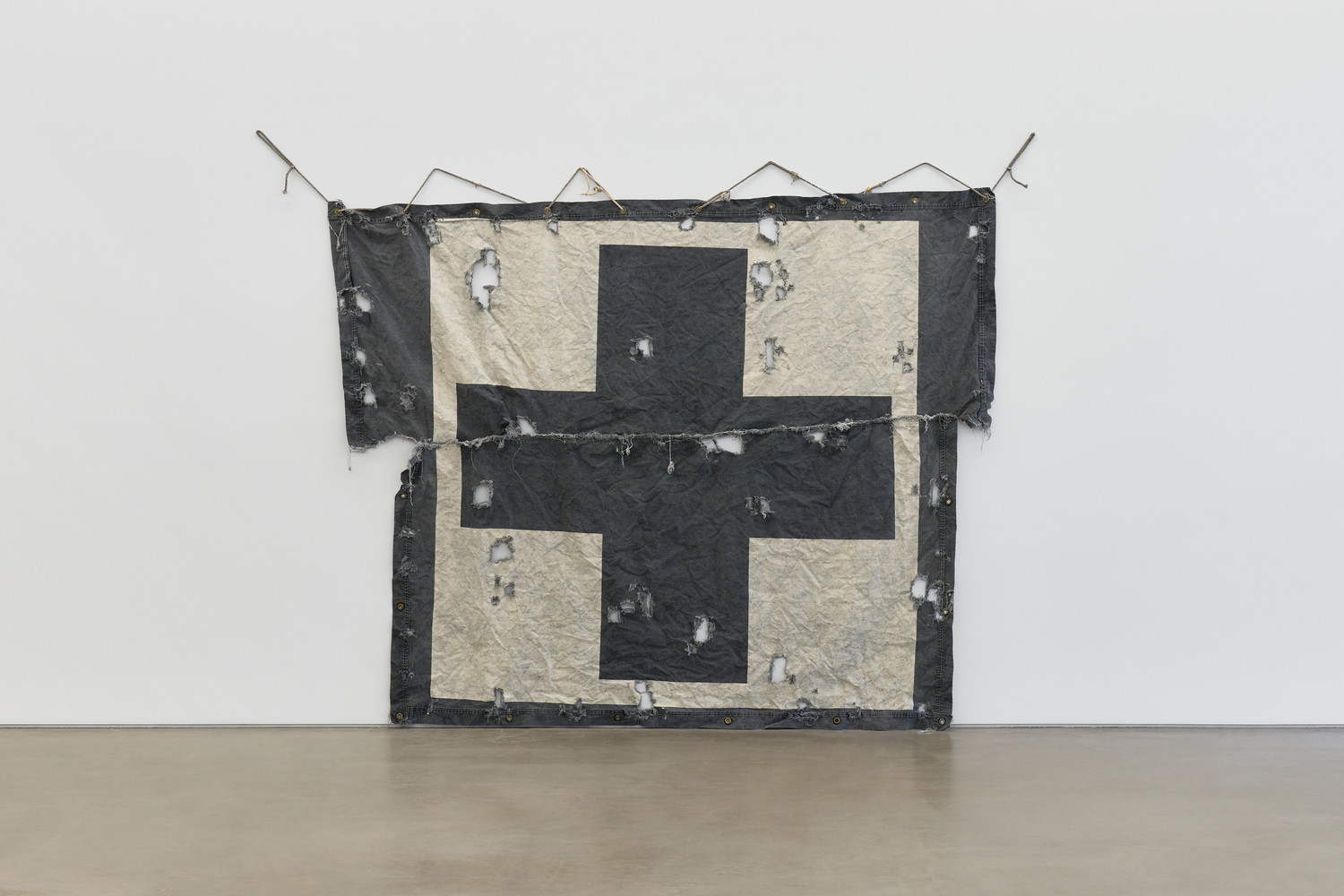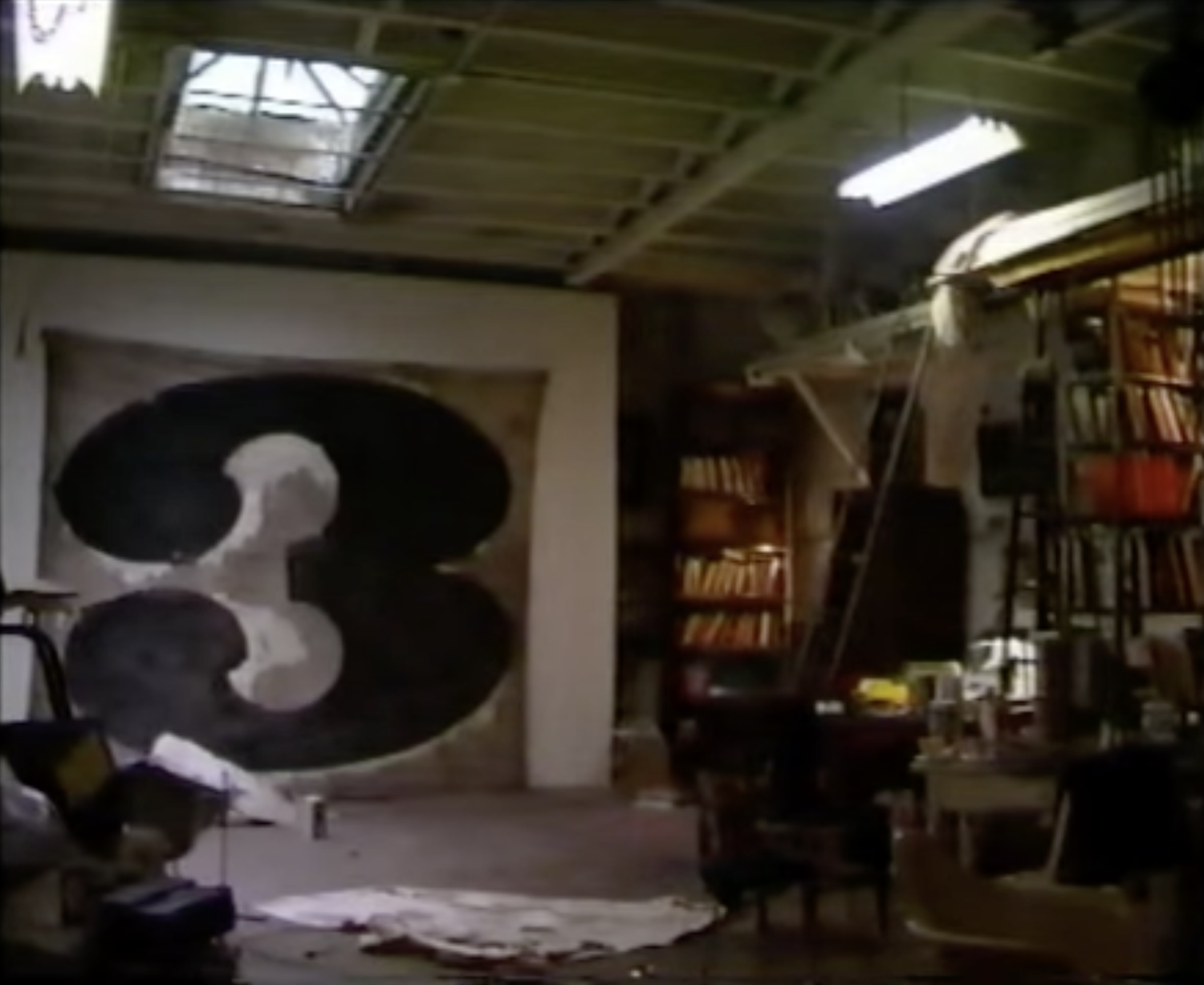- Holt Quentel (b. 1961)






The exhibition features four paintings from the 1980s and 1990s, which will be on display for the first time since they were acquired by renowned art dealer Thomas Ammann.
“I can make something look 40 years old in two days. But at some point, it would genuinely have to fall back on itself.” (1)
An emerging artist within the New York scene of the 1980s, Holt Quentel (b. 1961, Chicago) had already made her exit from the art world in the 1990s. She remains a recluse to this day.
Although the memories of Quentel and her theory-driven art evoke the past, her outlook remains pertinent within the rubric of postmodernism, Western traditions, and the politicized spaces of the United States today.
Quentel’s work alludes to the giants of modernism through her assertive art-making process: she would cut and stitch together variously sized fragments of raw canvas before painting a single, bold motif in saturated primary colors. Her motifs are limited to geometric shapes, letters, and numbers, most often crosses, E’s, and 3’s. Quentel’s distressed unstretched canvases were physically assaulted by electric sanders and put through a commercial washer and dryer before being hung from frail ropes and nailed onto gallery walls. They appear like artifacts from a very distant past, or perhaps weary, worn-out battle flags. The artist’s process consumes the canvas, with the visuals noticeably degraded by the art-making process.
As a result of her artificial aging the canvas, Quentel’s paintings become monumental end objects that have a rough-and-tumble look, an expression of escaped ontology and entropy. Such artifice, in paradoxically “forged byproducts,” encompasses ideas spanning art history and philosophy as well as more topical issues.
In Untitled (1987), a silkscreen of a man reaching for a gun in his holster with wrap-around ammunition is painted twice onto an exhausted and stitched canvas. This vintage-looking western graphic is a harsh reminder of the obsessive gun culture that is ingrained in American society. Stitched on the lower half of the work is a canvas painted in yellow and black chevron, resonant of Kenneth Noland.
With reference to the expressionistic gestures of Jackson Pollock, the geometric shapes of Frank Stella, and, most significantly, the signage of Jasper Johns, Quentel’s gestures, shapes, and signage are presented as actualities: the aesthetic experience is just as critical as the ideas behind the production of art. Her oeuvre is heavily reminiscent of the work of Arte Povera artists, such as Alberto Burri’s Sacchi (sacks) series and Lucio Fontana’s Spazialismo (Spatialism).
The focus of postwar art in the U.S., especially for the Abstract Expressionists, was to manifest internal feeling. In her work, Quentel sourced external theories and materialized these theories through historical and formal aspects. Hints of Derrida’s logocentrism, Marx’s materialism, Heidegger’s ontology and destruction, Baudrillard’s simulacra, and Cixous’s poststructuralist feminist theory can be recognized in Quentel’s choices.
Through her lived experience and circumstances, Quentel made decisions to refute, develop, or balance theories and ideas; she played within the systems of tradition.
For further information, please reach us at info@maisondart.com
1. Holt Quentel. New York A Late Modernist Discourse I (1988-9). Directed by Francq Volders, Youtube, uploaded by Philip Pocock, May 8, 2013, https://www.youtube.com/watch?v=fKmkDDO6aF8

Quentel's studio, New York, 1980s